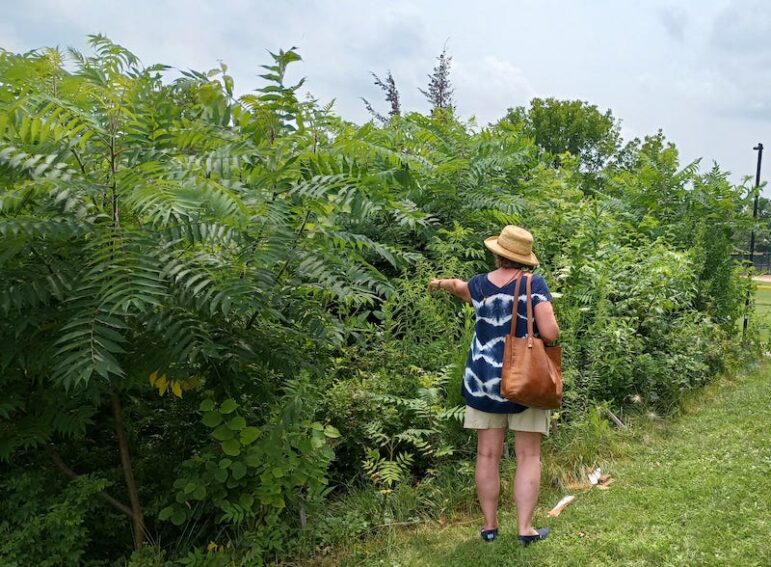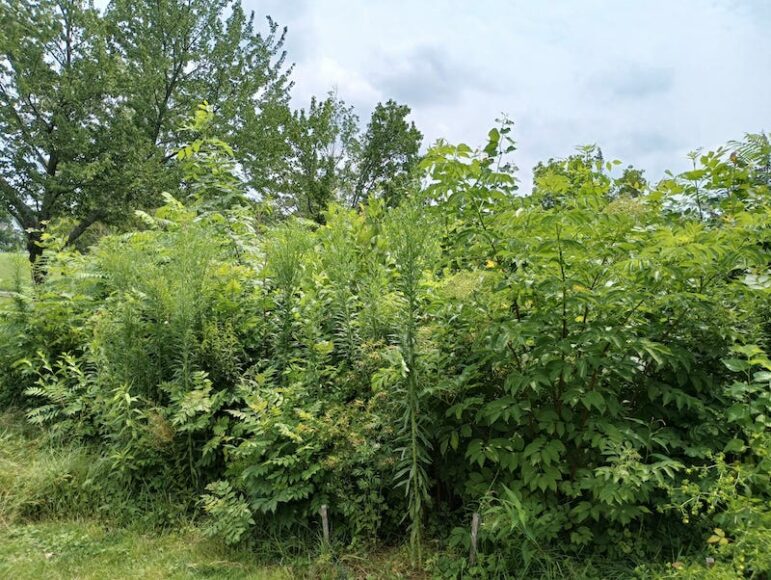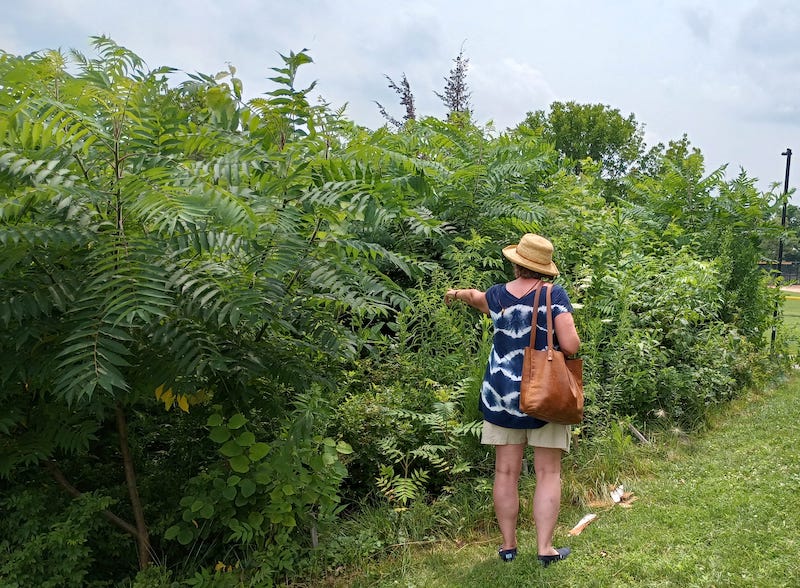
This spring, a group of Watertown residents — known as the Watertown Miyawaki Team — met to develop a Miyawaki Forest. These forests are named for Akira Miyawaki (1928-2021), a Japanese botanist with a passion for trees.
Traveling around his country, he noticed groves of large, mature trees growing near Shinto temples. He was surprised the trees were so healthy, in spite of growing close together. He wondered: what if people planted small, compact mini-forests in cities? Would that help to clean the air, cool the streets, and combat climate change?
His idea caught on, and now people are planting these tiny forests around the world. A Miyawaki forest can be as small as a living room rug or as big as a parking lot, but it must have plants that are native to the region. Its trees grow faster than in a traditional forest and capture carbon dioxide more efficiently, converting it into oxygen. Trees also provide cooling evapotranspiration and much-needed shade as the climate warms. This process can combat the extreme heat, fires, floods and tropical storms caused by global warming. Trees and plants in a Miyawaki forest also attract birds, bees, small animals, and helpful bacteria.
We are eager to find the right spot for a forest in Watertown and we hope to plant in the fall of 2024. Since visiting the City of Cambridge’s first Miyawaki Forest in nearby Danehy Park, we have seen forests in other locations and observed a Miyawaki Forest planting in Ayer. We also consulted with Trees for Watertown, with Tree Warden Michael Micieli, and with Raja Abdelmalek of Winchester, who has planted two forests in Jordan.

For residents who would like to learn more about these forests, we recommend Hannah Lewis’s excellent book, Mini-Forest Revolution: Using the Miyawaki Method to Rapidly Rewild the World. Copies of the book are now available at the Watertown Library and through the Minuteman Library System. We invite you to contact us at WatertownMiyawaki@gmail.com.
The Watertown Miyawaki Team will host a table next to Trees for Watertown, at the Watertown
Faire in the Square on Saturday, September 23rd. Come to learn more and contribute your own
ideas!
Liza Ketchum, author of The Last Garden, and co-author of Begin with a Bee, is a member of the Watertown Miyawaki Forest Team. Her children’s book on Miyawaki Forests, Green Heart, Tiny Forest, co-authored with Jackie Briggs Martin and Phyllis Root, is due out in 2024. She lives in Watertown’s East End.
Liza Ketchum

I look forward to seeing you at the fair in the square, I will be at the watertown community garden tent.
Hard to argue against more trees. But I would suggest considering sites where there are now few trees or none, rather than existing parkland or green space. All the benefits of these oases would be multiplied in areas now covered by pavement. Anyone who agrees might suggest sites where these pop-up forests would improve the local quality of life. Even the municipal lot in the Square could stand a little greening. Great idea in any case.
I love the idea of putting one in the Square by the bus stops!
Love that idea Marcia! I wonder if they have to be trees or could be shrubs, etc, also
I love the idea, but looking at the photo of the one in Cambridge I see a few Staghorn Sumacs in there. These are weed trees, and although very attractive, they aren’t a good choice for anyone to be planting deliberately. They grow very fast, hence the wood is not very dense, which makes them weak, and prone to dropping limbs…very large heavy limbs, in the first big storm or high wind situation, which can be dangerous for anyone or anything beneath them. You see them in thickets along the highway all over, and anywhere that a seed can take root they will grow.
You are correct about sumacs (though they are pretty in the fall.) At a meeting of our Miyawaki group tonight we discussed the sumacs at the Cambridge forest. The Cambridge group consulted with Indigenous people about tree species that were important to them, and sumacs were on their list. In the end, the bigger trees in that forest will take over and the sumacs will probably be crowded out.
I hear you about the Sumacs! I thought the same thing, but as our team has dug in to learn more about Miyawaki Forests over the last few months, I have learned that these forests are originally planted to include a mixture of native plants which will grow into four layers: shrub, sub-tree, tree and canopy.
The enriched soil and planting density benefits and nourishes all plants, so all plant types thrive originally, nourishing the soil with a healthy ecosystem of bacteria and fungi so that all plants thrive with little or no maintenance after the first year. As the plants mature, the canopy layer trees will outgrow all other layers, so over the next 10 years, the larger trees like oaks, maple, fir and birch are likely to outgrow the sumacs and become dominant in this new mini forest.
The amazing thing about the Miyawaki method is that it has been shown time and time again, in many different environments around the world, that trees grow faster and are healthier than trees planted alone.
There was just a great article in The Globe/New York Times about these mini-forests.
So much to learn and so much potential for increasing the green canopy in Watertown and reducing heat islands!
https://www.bostonglobe.com/2023/08/26/nation/tiny-forests-with-big-benefits/?p1=BGSearch_Advanced_Results
https://www.nytimes.com/2023/08/24/climate/tiny-forests-climate-miyawaki.html
Any dense cover planted within 100 yards of food sources such as waste dumpsters behind food establishments or any buildings that serve food such as schools/elderly housing will most definitely make ideal harborage and breeding points for more rats in the city. Rats are now in neighborhoods across the city that have never been infestation areas in the past. Rats have now found food sources such as fruit and berry trees in neighborhood backyards and are breeding prolifically like never before. Cold weather is quickly approaching and some unprepared and vulnerable homes will be seeing uninvited guests this winter. There is plenty of potential for unintended consequences associated with this idea.
Sounds like a great environment for beautiful raptors to thrive!
A reminder to please sign comments with your full name.